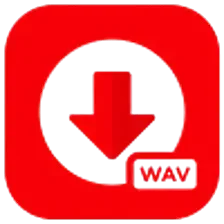A Guide to Using the New Mod.io

Mod.io has solidified its position as a leading platform for user-generated content (UGC), bridging the gap between creators and players across various gaming platforms. With continuous updates and refinements, the “new” Mod.io focuses on a streamlined user experience, making it easier than ever to discover, download, and even create mods for your favorite games. Whether you’re a seasoned modder or just looking to enhance your gameplay, understanding the platform’s key features is essential visit mod.io connect.
This article will guide you through the essentials of using Mod.io, from finding and subscribing to mods to navigating the platform’s user-friendly interface.
1. Understanding Mod.io’s Core Purpose
At its heart, Mod.io is a universal modding platform. Unlike game-specific mod sites or Steam Workshop, Mod.io aims to provide a centralized, cross-platform solution for game developers to integrate modding directly into their titles. This means:
- In-Game Integration: Many games now feature direct Mod.io integration, allowing you to browse, subscribe to, and manage mods without ever leaving the game. This is a significant user experience improvement.
- Cross-Platform Support: Mod.io supports modding across PC, consoles (PlayStation, Xbox, Switch), and even mobile, breaking down barriers for UGC.
- Developer-Friendly Tools: For developers, Mod.io offers SDKs (Software Development Kits) for popular engines like Unreal and Unity, along with a robust REST API, making it easier for them to implement mod support.
2. Navigating the Mod.io Website and In-Game Browsers
The Mod.io experience often begins either on its website (mod.io) or directly within your game, if it has integrated Mod.io support.
- The Website (mod.io):
- Discover Games: The homepage and “Browse Games” section allow you to explore all titles that support Mod.io. You can search by game name, genre, or popular tags.
- Game Pages: Each game has its dedicated page, showcasing its available mods. Here, you can filter by category (e.g., maps, characters, weapons), sort by popularity or recency, and read mod descriptions.
- Mod Pages: Clicking on a specific mod takes you to its dedicated page, where you’ll find detailed descriptions, screenshots, videos, and user comments.
- User Accounts: You’ll want to create a Mod.io account (or log in via Steam/other platforms if available). This allows you to subscribe to mods, track your favorites, and leave comments.
- My Collection: Your personal “My Collection” section lists all the mods you’ve subscribed to, making it easy to manage your library.
- In-Game Mod Browsers: For games with direct Mod.io integration, the experience is even more seamless.
- Access: Look for a “Mods,” “Community Content,” or “User-Generated Content” option within your game’s main menu.
- Browse & Subscribe: Within the in-game browser, you can typically browse, search, and subscribe to mods just like on the website.
- Automatic Installation: When you subscribe to a mod in-game, Mod.io’s integration often handles the automatic download and installation, sometimes even requiring a game restart.
Read More – What is Student Connect uwa.
3. Finding and Subscribing to Mods
Finding mods is intuitive. Whether on the website or in-game:
- Select Your Game: Navigate to the specific game you’re interested in.
- Browse/Search: Use the Browse categories, tags, or search bar to find mods that pique your interest.
- Review Mod Details: Click on a mod to view its description, images, and other relevant information. Pay attention to compatibility notes and user reviews.
- Subscribe/Download:
- For in-game integration: Look for a “Subscribe” or “Install” button. Clicking this will add the mod to your game, often automatically downloading and installing it.
- For manual installation (if applicable): On the website, some mods might offer a direct download option. You’ll then need to manually place these files into your game’s mod directory (usually specified by the mod creator or game community).
4. Managing Your Mod Library
Keeping your mod library organized is crucial, especially if you subscribe to many.
- “My Collection”: This section on the Mod.io website is your central hub for all subscribed mods. You can easily see what you’re subscribed to, unsubscribe from mods you no longer want, and check for updates.
- In-Game Management: Many integrated games offer in-game options to enable/disable specific mods, which is useful for troubleshooting or customizing your current play session without fully uninstalling.
- Updates: Mod.io generally handles mod updates automatically for subscribed mods, ensuring you always have the latest version. You might get notifications when updates are available.
5. Troubleshooting and Best Practices
While Mod.io aims for a smooth experience, issues can arise:
- Read Mod Descriptions: Always read the full mod description for installation instructions, known conflicts, and dependencies.
- Check Compatibility: Ensure the mod is compatible with your game version and any other mods you’re using.
- Report Issues: If a mod isn’t working or causes crashes, report it to the mod creator via the mod’s page.
- Clear Cache/Reinstall: For persistent in-game issues, sometimes clearing the game’s cache or reinstalling the Mod.io channel (if applicable) can help.
- Developer Support: For game-specific issues related to Mod.io integration, check the game developer’s support channels.
You May Also Like – GM Global Connect login.
The “new” Mod.io is constantly evolving, with a strong focus on user accessibility and cross-platform compatibility. By familiarizing yourself with these steps, you’ll be well-equipped to dive into the exciting world of community-created content and truly personalize your gaming adventures.
